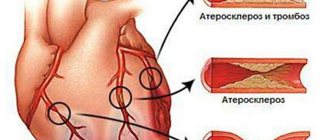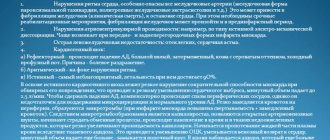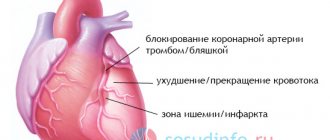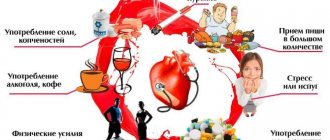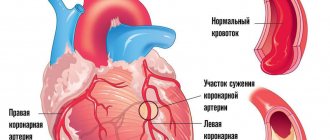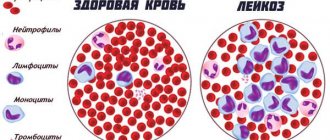Symptoms of myocardial infarction in women are different, but the main symptom is acute pain in the chest area. A similar manifestation in medicine is called anginal status, which manifests itself in people of the middle age category in 90-95%. However, such statistics are more typical for men. As for women, they are susceptible to the described disease in old age, when the level of estrogen in the body decreases.
Important! This process occurs naturally and depends on the biological characteristics of the body.
Etiology
The substance estrogen prevents the development of a heart attack, namely, it reduces the contraction of coronary vessels and prevents the formation of atherosclerotic plaques. As a result, the main causes contributing to the development of the described pathology are eliminated. In particular, this is blockage of the artery by cholesterol formations and coronary spasms, which negatively affects the human condition.
When postmenopause occurs, the synthesis of estrogen in a woman’s body decreases, and the likelihood of progression of myocardial infarction increases significantly. But in the age period over 50 years, women already have a history of many chronic diseases in the form of arrhythmia, arterial hypertension, and other pathologies not related to the activity of the heart muscle. Existing diseases, combined with the peculiarities of the development and localization of damage to the heart muscle, distort the manifestation of classic symptoms of a heart attack.
Statistics show that in 40% of cases of heart attack in women, atypical types progress. This greatly complicates the ability to determine an accurate diagnosis and prescribe the most effective therapy. The described heart disease can most likely lead to disability, or in the worst case, death. The risks of such consequences can only be reduced by timely detection of cardiac dysfunction and consultation with a cardiologist. That is why it is important to know the first signs of a heart attack and be able to recognize them at the initial stage.
About the warning signs of a heart attack
When diagnosing cardiac pathology, its positive outcome without progression of ensuing complications is higher in men. However, due to the characteristics of the body, the development of myocardial infarction in women proceeds more slowly. Its symptoms appear and increase over 1-2 months, indicating the onset of heart failure:
- Insomnia, general sleep disturbance.
- Constant fatigue that does not go away after proper rest or long sleep.
- Swelling of the hands and feet, increasing significantly in the evening.
- Progression of bradycardia (rapid heartbeat).
- Difficulty breathing with a feeling of suffocation.
- A symptom reminiscent of the development of periodontal disease.
- Frequent urge to urinate, increasing towards night.
- Unreasonable and sudden changes in mood, unexpected attacks of fear, panic attacks.
Myocardial infarction begins from one or more of the above symptoms. If they are identified, an immediate trip to a therapist or cardiologist is strictly indicated.
Practice shows that in half of the cases of the described pathology in women, it is preceded by angina pectoris, which is a dangerous coronary spasm. Medicines belonging to the nitrate group help to cope with this disruption of the heart muscle. Worrying pain in the chest area goes away after using special medications, but they are an alarming harbinger of heart disease.
What are the symptoms of heart disease in men?
Symptoms of heart disease in men may be absent for a long time, although it is already developing in the body. Heart disease ranks first among the causes of death among people, especially for men. Often a person learns about an illness when the disease is advanced and its consequences can no longer be prevented. A large number of people who have suffered such diseases live with their consequences, which can no longer be cured.
Such diseases sometimes develop long and slowly. There may be no symptoms at all or there may be subtle signs. Early diagnosis can allow these diseases to be recognized when they can still be treated without sequelae. Therefore, you need to know the first symptoms of developing cardiac pathologies in order to consult a doctor in time and cure them without irreversible consequences.
First symptoms
Men suffer from heart disease more often than women. There are many reasons for this: smoking, alcohol, poor lifestyle. The signs of these diseases in men are often different from similar signs in women. Men sometimes notice problems with erection, unreasonable feelings of anxiety, coughing, and a feeling of pressure in the chest. It is very important to notice these signs in time and begin treatment.
- Cough. Most often this is a signal of a cold or respiratory illness, but sometimes it indicates heart disease. This is not difficult to determine. For heart pathologies, the use of expectorants is useless; they do not help. A cough should be especially alarming when a person is lying down.
- Another symptom is shortness of breath. It manifests itself as a feeling of lack of air or slight suffocation when a person is physically active or at rest. This sign is worth paying special attention to, since heart disease is present in 90% of people suffering from shortness of breath.
- Weakness and fatigue. They can be a consequence of increased physical activity, stress and other factors. However, this may be one of the signs of heart disease. Usually, with heart pathologies, these symptoms intensify over time, appetite disappears, and swelling of the legs appears.
- High pressure. If it is constantly elevated, this should be a cause for alarm. Arrhythmia, a rare or, conversely, too fast pulse may be a sign of developing coronary artery disease.
- Swelling. Sometimes it appears after eating salty foods, large amounts of liquid, or alcohol. But it may be a consequence of cardiac dysfunction. Most often the face, arms and legs swell.
- Pain in the neck, left arm, back or shoulder may indicate osteochondrosis and myositis. But it can also be an early sign of heart disease.
- Chest pain. Pressure, pain, compression in the chest area are a signal of the development of cardiac pathology. The pain can radiate to the neck, back, shoulder, occurs unexpectedly or appears regularly.
- Fainting. It can occur due to severe chest pain or due to developing heart failure. Unexpected fainting is very serious, as acute heart failure can lead to death.
The main heart diseases in men are ischemia, arrhythmias, heart failure, and inflammatory diseases.
Signs of ischemia
During ischemia, the myocardium is not sufficiently supplied with blood, so it spasms. Main symptoms in men:
- The main symptom is pain. Burning, cutting, shooting, it can appear during physical activity and disappear after it.
- Not only the chest area can hurt, but also the arm, back, and neck.
- Shortness of breath that gets worse over time.
- Sweating.
- Weakness, feeling tired, dizzy.
- Interruptions in the work of the heart, when it seems to freeze.
- Nausea and vomiting.
The disease may have no symptoms until a heart attack occurs. In this case, the person loses consciousness, his skin becomes gray, and his pupils become dilated.
There are almost imperceptible signals that predict ischemia. This is an inexplicable fear, emotional instability, a feeling of discomfort in the chest. They should not be ignored. It’s better to be safe than sorry later.
Signs of violations
In middle age, men are especially susceptible to heart disease, each of which can be accompanied by arrhythmia. Some types of arrhythmias can cause sudden death, so you should be careful about this manifestation of heart disease.
- Feeling of heart stopping or extrasystole. These signs are found in most healthy people, but only people suffering from neurosis notice them. They feel how the heart skips another beat, stops for a second or somersaults. If you focus on them, fear of death may appear, accompanied by dizziness and weakness. If there is a serious heart pathology, arrhythmia requires increased attention and treatment.
- Heartbeat. His attacks occur suddenly and vary in duration. It occurs more often in men than in women. They can be caused by various types of intoxication, disruption of the thyroid gland, or serious abnormalities in the functioning of the heart. Sometimes such attacks occur for no reason.
- Sometimes arrhythmia causes dizziness, weakness, and fainting.
Symptoms
Acute heart failure threatens a person's life. It does not arise immediately, but on the basis of various diseases that develop over the years. Drinking alcohol, smoking, and drug addiction cause great harm to the heart and can lead to various diseases.
Signs:
- frequent, shallow breathing;
- severe shortness of breath;
- dry cough, sometimes with foamy sputum;
- loud wheezing in the lungs;
- suffocation;
- lips and fingers turn blue.
If such symptoms appear, you should immediately consult a doctor; delay can lead to death.
Heart failure can be chronic, having the following symptoms:
- shortness of breath during physical activity;
- fast fatiguability;
- swelling of the limbs;
- sleep disorders, insomnia.
Chronic heart failure should be treated; it shortens the life of men by 10-15 years.
How to recognize myocardial infarction
In medical practice, in addition to the classic anginal symptom, it is customary to identify other atypical manifestations that indicate the onset of the described disease.
Heart attack in women is represented by the following symptomatic forms:
- The anginal status progresses in 75% of cases and is characterized by the localization of pain in the upper part of the body on the left. Discomfort is felt in the chest, arm, shoulder area, neck; often a woman complains of a toothache that appears and goes away on its own. The distinctive first sign is often acute pain localized in the occipital area. Other symptoms such as bluish skin, panic attacks, numbness in the arms and legs, and excessive sweating are common to both sexes.
- The abdominal form is rare, accounting for about 3% of all known cases. Its manifestation is typical when the posterior wall of the myocardium is damaged. Pain sensations are disturbing in the abdominal area, falsely indicating a disorder in the functioning of the gastrointestinal tract, for example, a stomach ulcer, appendicitis, pancreatitis. Taking antispasmodics does not eliminate painful wave-like sensations.
- Status asthmaticus makes itself felt in 10-15% of cases and is characterized by the presence of basic signs indicating bronchospasm. However, cough is rare, and bronchodilators do not provide relief. In a state of complete rest, the woman complains of difficulty breathing, shortness of breath in a state of complete rest. This form often occurs in women over 60 years of age with a history of prolonged hypertension and a previous heart attack.
An important point is that the continuation of the abdominal or asthmatic form in frequent cases is anginal status. At the same time, determining the exact diagnosis of myocardial infarction is difficult due to the severity of the symptoms inherent in atypical forms. Only a highly qualified specialist can accurately determine the pathology.
Symptoms of heart attack in older women
A heart attack develops when there is an acute circulatory disorder as a result of ischemia and necrosis of a portion of the myocardium.
According to statistics, men aged 45–65 years are at greater risk of heart attack than women. This is due to the peculiarity of hormonal metabolism: the production of estrogen prevents the development of cardiac pathology. However, during pregnancy, menstrual cycle disruption, and menopause, an estrogen imbalance develops.
The condition is aggravated by lipid metabolism disorders, heart disease, and stress, which can lead to a heart attack even in women at a young age.
Signs, symptoms and early warning signs
The main feature of a heart attack at a young age is an acute onset against the background of complete well-being, and the absence of precursors of cardiac pathology. Most patients do not have a history of heart pain characteristic of ischemia, or report some deterioration in their well-being within one or two weeks.
A typical manifestation of cardiac tissue necrosis is severe pain in the chest or in the pericardial region. However, at a young age, the signs of myocardial infarction in women are somewhat different:
- causeless weakness, after rest and at rest;
- pronounced deterioration of the condition during the day, hours;
- dizziness, tremors in the hands, weakness in the legs and sweating;
- aching pain in the stomach and epigastric region;
- indigestion, abdominal discomfort;
- nausea and vomiting;
- an attack of bronchospasm resembling an asthmatic one;
- a combination of weakness, shortness of breath and increasing anxiety, even at rest;
- the appearance of pain in the left half of the abdomen radiating to the back or interscapular space;
- a feeling of squeezing or numbness in the neck and chest on the left, discomfort or tingling in the left arm;
- numbness, coldness and pain in the chin and jaw area on the left, toothache;
- headache, blurred vision, feeling of lack of air, a state close to fainting.
Many young patients do not seek medical help and attempt treatment on their own, believing that the cause of their poor health is a cold, upset stomach or flu. This increases the risk of late detection.
At older ages, a heart attack is more common. The main symptoms of myocardial infarction in women over 50 years of age:
- acute pain in the heart, chest or chest is the first sign of an attack in older women;
- pain can be felt in the left half of the torso, neck and chest, lower back and back;
- pain may radiate between the shoulder blades, in the face or behind the ear;
- sudden increase in shortness of breath and feeling of lack of oxygen;
- weakness develops against the background of instability of blood pressure;
- dizziness, blurred thoughts, blurred vision;
- weakness in the legs and arms, faintness;
- possible disorder of the gastrointestinal tract, stomach pain, discomfort;
- Fear and panic intensify as the pain increases.
Heart attack in a woman aged 30: causes and risks
The main factor in the development of acute infarction is atherosclerosis of blood vessels, especially coronary vessels, which provide blood flow to the heart.
Even at a young age, the cause of pathology can be:
- Family history, atherosclerosis in relatives.
- Lipid metabolism disorders, high cholesterol and harmful fraction of low-density lipoproteins.
- Dyslipoproteinemia.
- Obesity, excess fatty and carbohydrate foods.
- Smoking and frequent use of alcohol and drugs.
In addition to atherosclerosis, arterial hypertension, hormonal or metabolic disorders increase the risk of heart attack. In women under 45 years of age, the cause of a heart attack can be estrogen deficiency as a result of an irregular menstrual cycle, lack of ovulation, early menopause, or after taking medications that inhibit the production of this hormone.
The cause of coronary pathology can be:
- Vasospastic spasms of the coronary arteries.
- Abnormal structure of the heart vessels.
- Secondary fibrosis of the coronary arteries of an infectious, allergic, toxic nature.
- Blood clotting disorders when taking contraceptives or hormonal drugs.
- Heavy blood loss and severe dehydration contribute to blood thickening.
- Hypercoagulation leads to the formation of blood clots and blockage of coronary vessels.
- Obesity at a young age makes the situation worse.
- In rare cases, a heart attack can be caused by a rupture of a coronary artery (dissection) during or after childbirth.
Diagnosis of the condition: how to identify pathology in time
To detect a heart attack, the doctor will first order an ECG. The cardiogram will show characteristic signs of a heart attack and deviation of the teeth.
To confirm, a rapid test is performed, which reveals heart attack markers - troponins - from a drop of blood, as well as an ultrasound of the heart.
It is recommended to determine serum enzymes - creatine phosphokinase, lactate dehydrogenase, myoglobin, troponin I.
Additionally carried out:
- General clinical and biochemical blood test.
- Study of the lipid spectrum of blood.
- Blood clotting test.
When the first signs of a heart attack appear in a woman, you should immediately call an ambulance. It is extremely important to begin treatment within the next 15 to 60 minutes. The outcome and prognosis for recovery depend on the speed of contacting a doctor and the start of medical care.
- At the prehospital stage, the ambulance team, taking into account symptoms, ECG or test data, catheterizes the vein and puts an oxygen mask on it.
- Delivers the patient to the cardiology hospital.
- The hospital is considering stenting, angioplasty or bypass surgery.
conclusions
More than 15% of cases of heart attack at a young age develop as a result of hormonal disorders, changes in blood clotting, congenital pathology of the heart and blood vessels. In addition to atherosclerosis, the risk of a heart attack increases the risk of an unhealthy lifestyle, alcohol and smoking abuse, and excess weight.
Often, a heart attack at the age of 35–45 years occurs with atypical symptoms, which complicates diagnosis and can lead to death if it is delayed to see a doctor. When the first alarming symptoms appear, you should call an ambulance.
If a heart attack is confirmed, delivery to the hospital within 2–6 hours will allow stenting, minimizing the risk of consequences and preventing a dangerous outcome.
The following sources of information were used to prepare the material.
Source: cardiograf.com
Myocardial infarction - what is it?
A heart attack is a type of ischemic disease that develops due to insufficient blood circulation in the heart muscle. The coronary vessels cannot deliver enough oxygen and nutrients to the heart. As a result, the heart muscle dies.
If you learn to notice the symptoms of the disease, you will be able to timely determine the development of a pre-infarction condition, and thereby quickly help yourself or a loved one.
How does a heart attack manifest?
The first signal to the development of a dangerous condition is pain in the chest area, which is accompanied by a feeling of pressure or compression. Pain sensations radiate to the left arm, shoulder or neck.
Often the painful feeling has a specific localization - in the epigastric region. At the same time, the lower row of teeth begins to ache.
Types of heart attack
A heart attack is divided into several forms depending on the nature of the course and the severity of symptoms.
- Typical. Expressed in the manifestation of all accompanying symptoms.
- Cerebral. The manifestations of this form are often similar to those of a stroke.
- Gastralgic. Accompanied by pain in the abdomen.
- Asymptomatic. The disease is determined only after diagnosis - an electrocardiogram.
- Asthmatic. Accompanied by breathing problems.
- Arrhythmic. The examination reveals arrhythmia.
Each of the above types is dangerous to a woman’s health. Therefore, at the first manifestations of pathology, you should consult a doctor for diagnosis and prescribing the correct treatment.
Source: https://aaabramov.ru/infarkt/simptomy-infarkta-u-zhenshhin-pozhilogo-vozrasta.html
Rarely encountered atypical forms
In young women and in patients over 30 years of age, in some cases the following types of myocardial infarction are diagnosed:
- Cerebral form, in which a persistent circulatory disorder in the brain is diagnosed. Among the accompanying factors, it is worth noting impaired coordination, confused speech, depression of consciousness, and frequent dizziness.
- Arrhythmic status. It is accompanied by a rapid heartbeat, which is a precursor to arrhythmia in women. This form of pathology registers only an abnormal heart rhythm, and there is practically no pain syndrome.
- As for the asymptomatic form of heart attack, it often occurs at an early age and in older people with a history of diabetes mellitus. Patients experience increased sweating, unusual and sudden irritability, while the pain syndrome is minimal. If there is no extensive area of myocardial damage, such a heart attack can only be detected during the closest examination using the ECG method.
Important! Any symptoms described above indicate that necrosis of cardiac muscle tissue has begun. The woman needs urgent hospitalization and professional examination. Drug and surgical therapy is carried out in a hospital setting.
Symptoms of the previous condition
Signs that indicate a likely approach of a heart attack in the near future appear for approximately 2-3 months.
Asthenic moments
Manifested by weakness, drowsiness. Why is this happening? Myocardial infarction develops against the background of coronary insufficiency, when cardiac structures do not receive enough nutrients and oxygen.
The process moves gradually; there is usually no rapid progression. Due to a decrease in the contractility of the heart, a lack of blood circulation occurs in the brain. Hence increased fatigue.
Another point is the poor supply of nutrients and oxygen to muscle fibers. Metabolic processes are slowed down.
This is not enough to cause atrophy, but it is enough to make the patient lethargic. The same moments are observed during the rehabilitation period.
Sleep disorders
There are many forms. The classic ones look like this.
The patient lies down and prepares for the night's rest. After 10-15 minutes, awakening occurs, it is no longer possible to lie down, and an unpleasant, oppressive feeling of false cheerfulness develops.
After another half hour, fatigue sets in again. But again there is no point, it is impossible to fall asleep. And so on all night.
Another option is waking up frequently during rest.
Both conditions are extremely painful, leading to asthenia and constant fatigue. A complete “reboot” of the brain does not occur. In addition, a long-term regimen of this kind leads to an imbalance of melatonin in the body.
This is fraught with impaired reproductive function, decreased libido, increased vascular tone, and early aging. The body literally works for wear and tear.
Nocturia
Simply put, excessive urination at night. In a healthy person, daily diuresis predominates, the volume being up to 80-90% of the total amount of urine.
A change in balance indicates kidney damage or a compensatory mechanism. The body strives to remove excess fluid; it does not have enough time during the day.
To reduce the load and reduce the amount of circulating blood, the excretory system works more actively. This is a worrying sign.
Although coincidences are possible, diagnostic testing should be performed. At a minimum, ECG, ECHO, measurement of pressure and heart rate. Ultrasound of the kidneys.
Mental disorders, emotional lability
The disorders are associated with insufficient blood circulation in the brain. The production of serotonin, dopamine, and neurotransmitters decreases.
On a subjective level, this manifests itself as severe depressive states. The woman becomes irritable, angry, and whiny. Minor moments can drive you crazy. Relieving symptoms does not give full effect; identification of the root cause is required.
Emotional and mental disorders are a nonspecific symptom of myocardial infarction. Differential diagnosis is necessary.
Arrhythmias
Various types of heart rate disorders. They are represented not only by the classic and well-known “general public” sinus tachycardia and the reverse phenomenon, but also by extrasystole, ventricular fibrillation (fibrillation, atrial flutter).
The development of such symptoms does not always precede a malnutrition of the cardiac structures. Perhaps the reason lies in the blockage of the bundle branches. An ECG test provides more information about the patient's condition.
Bleeding, disturbances in the rheological properties of blood
Basically, there is a release of liquid connective tissue from the gums. Such abnormalities also have no obvious connection with heart problems. But this is only at first glance.
In fact, a change in fluidity, an increase in vascular permeability affects the general situation. The symptom of pre-infarction in women occurs in 25% of cases.
Edema of the extremities
Peripheral. Legs and ankles suffer. The symptom appears as a result of insufficient kidney function.
There is an excess load on the heart. The volume of circulating blood increases sharply, and disruption of the normal activity of cardiac structures develops. Heart rate rises, blood pressure too.
Urgent assistance required. At a minimum, mild diuretics are prescribed. Saving potassium and magnesium so as not to further worsen the situation.
Dyspnea
Characterized by the impossibility of normal gas exchange, even in a state of minor physical activity.
The manifestation is accompanied by dizziness, but not always. As the process progresses and approaches the critical point, the symptom develops in a state of rest. This is an alarming moment. Urgent diagnosis is required.
First aid rules
If there are signs of a microinfarction or heart attack, the woman should not be left without help; a team of medical specialists must be immediately called. Next, you should follow the sequence of actions that will alleviate the condition of the victim:
- Ensuring complete rest, even the slightest movement can worsen the condition.
- Place the woman in a horizontal position with her head slightly raised. If attacks of suffocation occur, the victim sits on a chair, bench, with her legs down.
- It is mandatory to take Nitroglycerin, which eases the exacerbation of the attack. If after 20 minutes there are no visible improvements, repeated administration of the indicated drug is allowed. The victim should not be given additional medications; they may cause complications in the cardiovascular system.
- In case of cardiac arrest, chest compressions are necessary.
Factors contributing to the occurrence of a heart attack
Most of our lives are not conducive to cardiovascular health. The reason for this is constant stress, poor nutrition, and a sedentary lifestyle. But the greatest influence on the development of coronary heart disease and an increase in the risk of heart attack is exerted by bad habits: smoking and excessive drinking of alcohol.
What else contributes to the occurrence of a heart attack:
- elevated blood cholesterol levels,
- diabetes,
- arterial hypertension,
- hormonal disorders (in particular, lack of thyroid hormones),
- excess weight,
- staphylococcal and streptococcal infections,
- passive smoking,
- rheumatism of the heart,
- excessive physical activity,
- stress, depression and neurosis.
What signs may indicate heart failure that can lead to a heart attack:
- snoring, apnea;
- swelling of the legs, feet and hands;
- bleeding gums, periodontal disease;
- arrhythmias;
- pain in left shoulder;
- shortness of breath, especially after physical exertion;
- frequent headaches;
- frequent night urination.
All these signs may be evidence of a pre-infarction state of the body.
Principles of treatment
Therapeutic measures during the onset of myocardial infarction are aimed at improving and stabilizing patients, for which the following conditions must be met:
- Maintain bed rest for several days after the attack. During this period, any physical activity is contraindicated. When the condition begins to return to normal, the woman is allowed to get up and walk, but under the supervision of specialists.
- Taking antiplatelet or antiplatelet agents, which help thin the blood, preventing the formation of blood clots. Such drugs provide better access to the “starving” organs and heart of oxygen carried by blood masses in sufficient quantities. Aspirin is a time-tested antithrombotic drug, but long-term use of it has undesirable side effects on the gastrointestinal tract in the form of gastritis, heartburn, pain, and nausea.
Undesirable consequences can be reduced by taking such medications coated with a special enteric coating. An example is “ThromboASS”, these tablets are not exposed to hydrochloric acid and dissolve only in the intestinal environment. This prevents direct contact with mucous membranes subject to irritation.
- If a pre-infarction or heart attack is suspected, medications are prescribed to help strengthen blood vessels, increasing their elasticity and tone.
- If unstable angina occurs, medications based on the active component clopidogrel are often prescribed. For example, Clopidex, Aggregal, Egitromb.
- Pain during a heart attack is reduced with the help of narcotic analgesics.
- Nitrates administered intravenously promote dilation of coronary vessels.
- Beta blockers help reduce the stress placed on the heart muscle. Due to such drugs, the body's need for oxygen is reduced, as a result of which cell necrosis is slowed down or even prevented. Blood pressure also stabilizes and heart rate decreases.
- If heart failure is detected, the attending physician prescribes diuretics, which carefully and effectively remove excess fluid from the body.
- In order for the heart to quickly adapt to pathological factors, it is recommended to take ACE inhibitors. Such medications help lower blood pressure to normal levels.
- Atherosclerotic plaques partially or completely block blood vessels; their formation is unsafe for life. Drugs of the statin group prevent the absorption of cholesterol through vascular walls. Example: Lipostat, Symvor. Cholesterol levels are normalized by the action of unsaturated fatty acids, for example, Tribuspamine, Linetol.
When drug therapy for myocardial infarction does not show the expected results, surgical intervention is prescribed. Among the most popular surgical techniques currently noted are coronary artery bypass grafting and balloon coronary angioplasty.
Important! A positive effect is achieved if the patient is transported to the hospital as soon as possible. Untimely implementation of resuscitation measures contributes to the growth of the focal zone of cells that have undergone necrosis. Severe damage can result in death.
In some cases, severe consequences occur after myocardial infarction, especially if relapses of the pathology occur. This may be dementia, disability, complete or partial loss of speech, amnesia, paralysis. After suffering an attack and carrying out the selected treatment, a rehabilitation period begins, which is quite long and requires a lot of patience from the injured person and from those around him. In some cases, recovery continues throughout life.
Heart attack in the elderly: symptoms, treatment, prevention
Alexandra Krasnova
Alas, the statistics are inexorable. Heart attacks in older people and their consequences most often cause death. In essence, a heart attack is the death of a certain area of the heart muscle. It is a severe form of coronary heart disease (CHD). This pathology occurs very often, especially in older people. However, in recent years, myocardial infarction has become “rejuvenated.” In this article we will analyze what the causes of this disease are, name the stages of its development, talk about its treatment and possible complications.
- In elderly people, myocardial infarction is preceded by prolonged chest pain (angina).
- In elderly patients, widespread or small-focal infarctions are often detected.
- A heart attack in older people in most cases develops against a background of persistent high blood pressure.
- Often the disease occurs without characteristic pain.
- Often the pathology is hidden under symptoms characteristic of intercostal neuralgia or acute respiratory infections.
- Pain during a heart attack is often accompanied by bubbling breathing and suffocation - symptoms of acute left ventricular failure.
- The disease quite often accompanies cerebrovascular syndrome, expressed in psychoses associated with sudden disturbances in the hemodynamics of the brain.
- In elderly people, a heart attack is often associated with a sharp drop in blood pressure (cardiogenic shock), which is the cause of about 90% of deaths.
- The disease becomes recurrent, i.e., with exacerbations.
- A heart attack in older people may be the reason for diagnosing diabetes mellitus as a complication caused by age-related changes.
- In every third case, heart attacks suffered for the first time are repeated.
- Dulling due to age of the reflex reaction of the cardiovascular system to external stimuli, such as sound, light or painful stimuli, physical activity, changes in body position, oculocardial reflex.
Age-related changes are accompanied by the development of clinical syndromes of mental disorders (sympathicotonia), increased excitability due to neurohumoral factors, which is accompanied by a sharp spasm of blood vessels affected by atherosclerosis, and the development of trophic disorders of the nervous system.
- Weakening of cellular and humoral immunity in combination with the incompleteness of the immune response to pathogens. As a result, protective enzymes remain in the blood and can damage the inner walls of the arteries.
- Increased levels of cholesterol, triglycerides, beta lipoproteins in the blood. Reducing the activity of lipoprotein lipase, which destroys “bad cholesterol,” as well as the amount of cholesterol synthesized by the liver.
- Disturbance of carbohydrate metabolism.
- Deficiency of thyroid hormones, decline in the activity of the reproductive system, activation of the sympathetic-adrenal and renin-angiotensin systems, an increase in the level of antidiuretic hormone in the blood.
- Activation of the blood coagulation system, leading to its coagulation inside the vessels, as well as a deficiency of anticoagulants that respond to stress.
- Decreased food quality and energy metabolism in the walls of the coronary vessels. This leads to an increase in sodium concentration, causing the development of atherosclerosis. Pronounced vasoconstrictor reactions of the arteries cause an increase in pressure. Age-related cardiac hypertrophy entails an increased need for oxygen.
Eliminating circumstances conducive to the development of coronary artery disease can lead to an increase in the life of elderly people by five to six years, and by two to three years for the elderly. Depending on the degree and size of damage to the heart muscle, this disease manifests itself in different ways. An extensive heart attack that affects a large area of the heart muscle is extremely dangerous. Moreover, there may not be any pain.
Heart attacks in older people can be typical or atypical. In the first case, pronounced pain is concentrated behind the sternum, in the second, pain is concentrated in the abdomen, cervical spine and arms. There is also a painless (erased) form. Basically, a heart attack progresses rapidly, with chest pain very similar to the discomfort of angina pectoris.
The main harbinger of acute ischemia is pain. It concentrates behind the sternum and can move into the left shoulder blade and arm. The pain is pronounced, burning and pressing, so the attack can easily be mistaken for angina. But unlike “angina pectoris”, when the pain is short-lived and nitroglycerin is effective, during a heart attack the pain lasts for many hours and even days. The pain may be accompanied by malaise, shortness of breath and dizziness. Often sticky sweat appears, paleness appears on the face, and the skin turns blue. There is a surge in pressure, which then decreases. When diagnosed, an increased heart rate and irregularities in the heart rhythm are detected.
The acute stage of a heart attack is characterized by a decrease in pain discomfort as the tissue of the heart muscle dies. At this time the following happens:
- body temperature rises;
- blood pressure decreases;
- rapid heartbeat, cough and shortness of breath appear.
During the period of remission, heart rhythms are restored, pain and malaise disappear, and the general condition improves. With scarring, no particular discomfort is observed; minor aberrations in the ECG are possible. Undoubtedly, as a result of a heart attack, consequences occur, which are divided into acute (early) and long-term (late). The first ones are characterized by:
- arrhythmia;
- acute heart failure;
- vascular thrombosis;
- pulmonary edema.
Minor necrosis of the heart muscle causes fewer complications. Due to the fact that the left ventricle is mostly affected, left ventricular failure progresses. It is characterized by difficulty in breathing for the patient, which forces the person to sit with a forward lean to relieve discomfort. Such insufficiency is dangerous due to the possible development of pulmonary edema. As a result of a heart attack, scattered and uncoordinated contraction of the ventricles (fibrillation), atrial fibrillation, and impaired intracardiac conduction (bundle branch block) may begin. In such cases, emergency medical attention is required. If a heart attack affects the area under the inner wall of the heart (endocardium), then thrombosis is likely to form in the systemic circulation. The detachment of a blood clot and its penetration into the bloodstream of the brain is fraught with thromboembolism and subsequent stroke. Statistics show that the female heart is less likely to suffer from heart attacks, but in adulthood the risks of acute ischemia in women increase significantly. Abnormalities caused by a heart attack are ischemic, electrical, mechanical, etc., but all of them can lead to the following:
- Obvious symptoms of heart failure, developing into cardiogenic shock. Shock is caused by a significant disruption of blood circulation, vasodilation and oxygen starvation of tissues and the brain. Symptoms are loss of consciousness, increased heart rate, severe weakness and darkening of the eyes.
- Mitral valve dysfunction in mild to moderate forms is often the result of a heart attack in women. If the papillary (papillary) muscles are affected, surgical intervention is required as soon as possible.
- Heart rupture is an extremely dangerous pathology, claiming about 3% of lives. This development of events, alas, is typical for women whose hearts, due to their physiology, are less resistant to complications after a heart attack.
- Post-infarction syndrome (Dressler) is an autoimmune lesion of the connective tissue of the heart that does not affect its muscular structure. It is characterized by pulmonitis, pleurisy and pericarditis. In this case, immediate treatment is essential to avoid more dangerous infectious complications.
- Acute blockage of a blood vessel by a blood clot (thromboembolism) as a consequence of a heart attack occurs more often in women than in men. After blockage, tissue ischemia usually develops. An extremely dangerous consequence can be the rupture of a blood clot. To eliminate the risk of detachment, timely prevention is necessary.
Physiological and psychological exacerbations of the post-infarction state in men are characterized by the following symptoms:
- depressed emotional state, fear of death;
- angina attacks;
- apathy towards work and physical activity;
- disruption of cerebral blood supply (stroke);
- pericarditis;
- aneurysm and development of heart failure;
- blockage of blood vessels.
A heart attack in older people and the above complications are extremely dangerous, so identifying them at an early stage will help to begin effective treatment as soon as possible or determine the need for surgical intervention. Often, emergency measures in case of a heart attack are taken by the patients themselves or their loved ones. It is important to know that at the first signs of angina pectoris, a harbinger of a heart attack, an elderly patient needs nitroglycerin tablets. If pain does not go away within five minutes, nitroglycerin is repeated. If repeated administration of the drug does not produce an effect, then the tablet is placed under the tongue for the third time. If the pain does not go away, you need to call an ambulance, and before it arrives, take crushed aspirin.
A heart attack in the elderly requires immediate hospitalization. At first, intensive emergency measures are carried out with the patient; he is limited in movement for at least a day. The patient is prescribed a diet that excludes salty and fatty foods.
Therapy for a heart attack involves the prescription of painkillers and antithrombosis drugs. For heart failure, heart rhythm disturbances, etc., specialized treatment methods are used.
If it is necessary to restore the permeability of the coronary arteries, surgical intervention is not excluded.
Rehabilitation of an elderly patient who has survived a myocardial infarction proceeds under the supervision of medical workers and consists of resort or sanatorium treatment with courses of physical therapy, therapy for arterial hypertension and weight loss. Animal fats and foods high in cholesterol are excluded from the diet. It is extremely important to completely give up bad habits, especially smoking. Prompt provision of first aid, effective cardiac rehabilitation and strict adherence by the patient to the doctor’s recommendations are the key to successful recovery after a heart attack.
